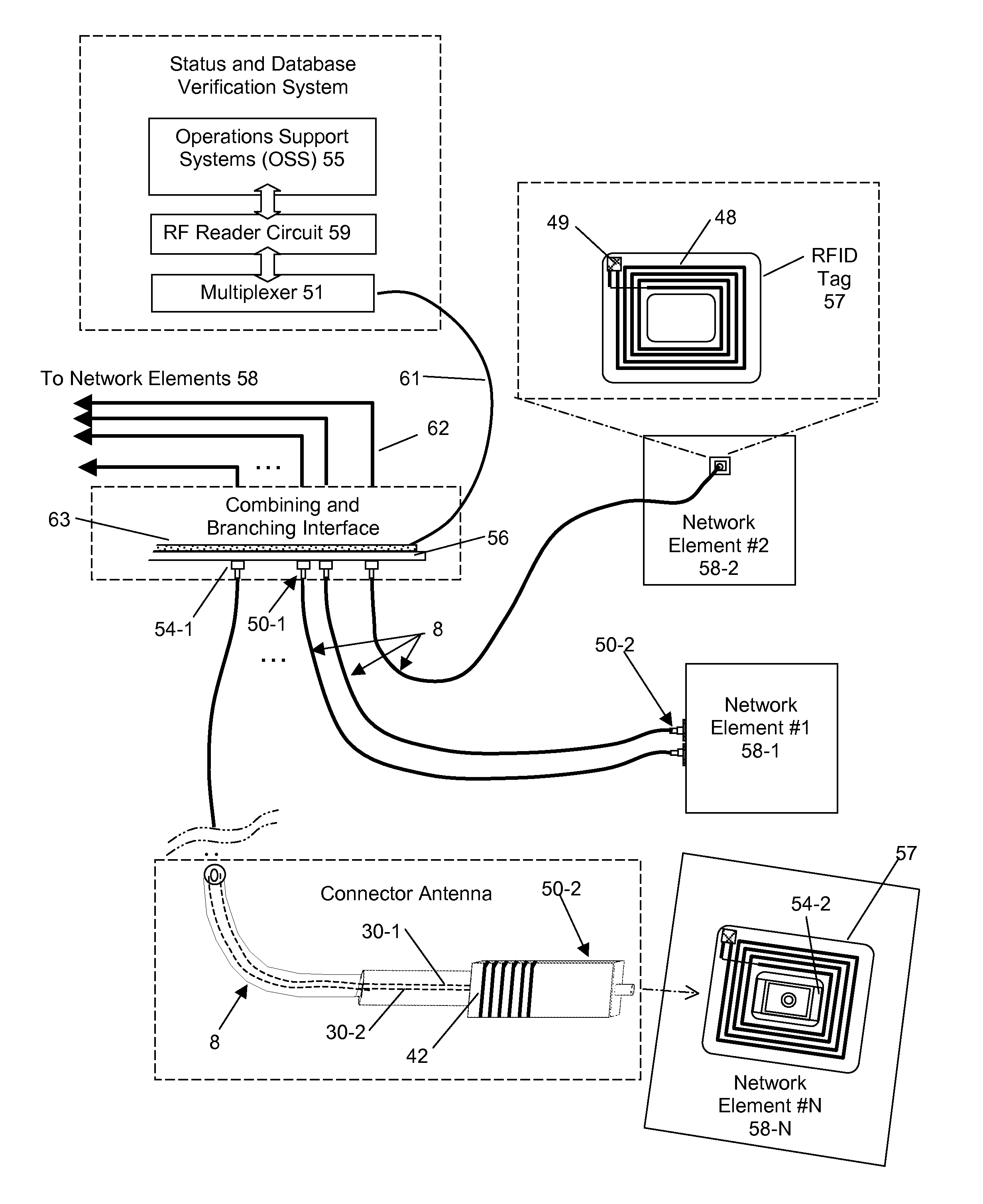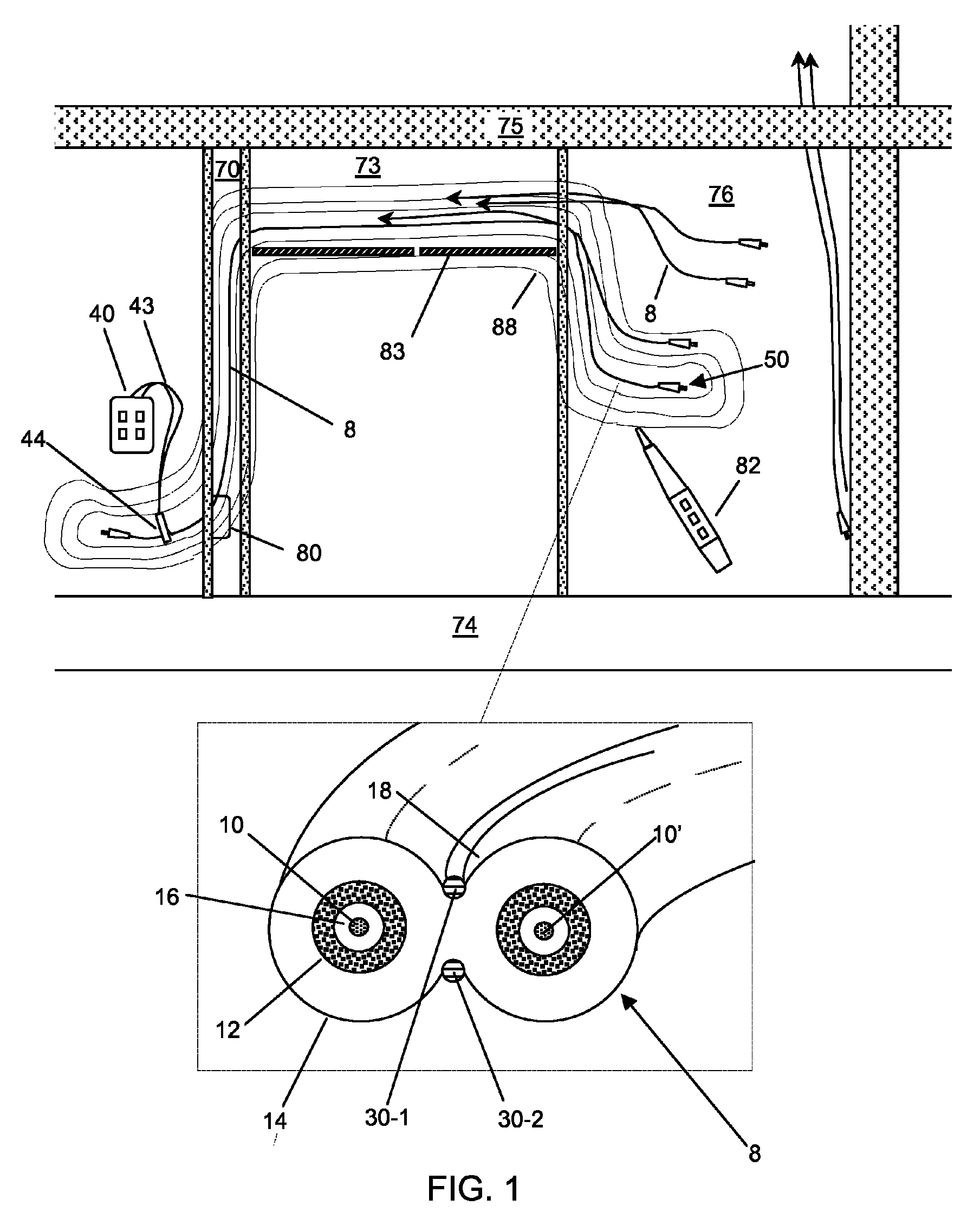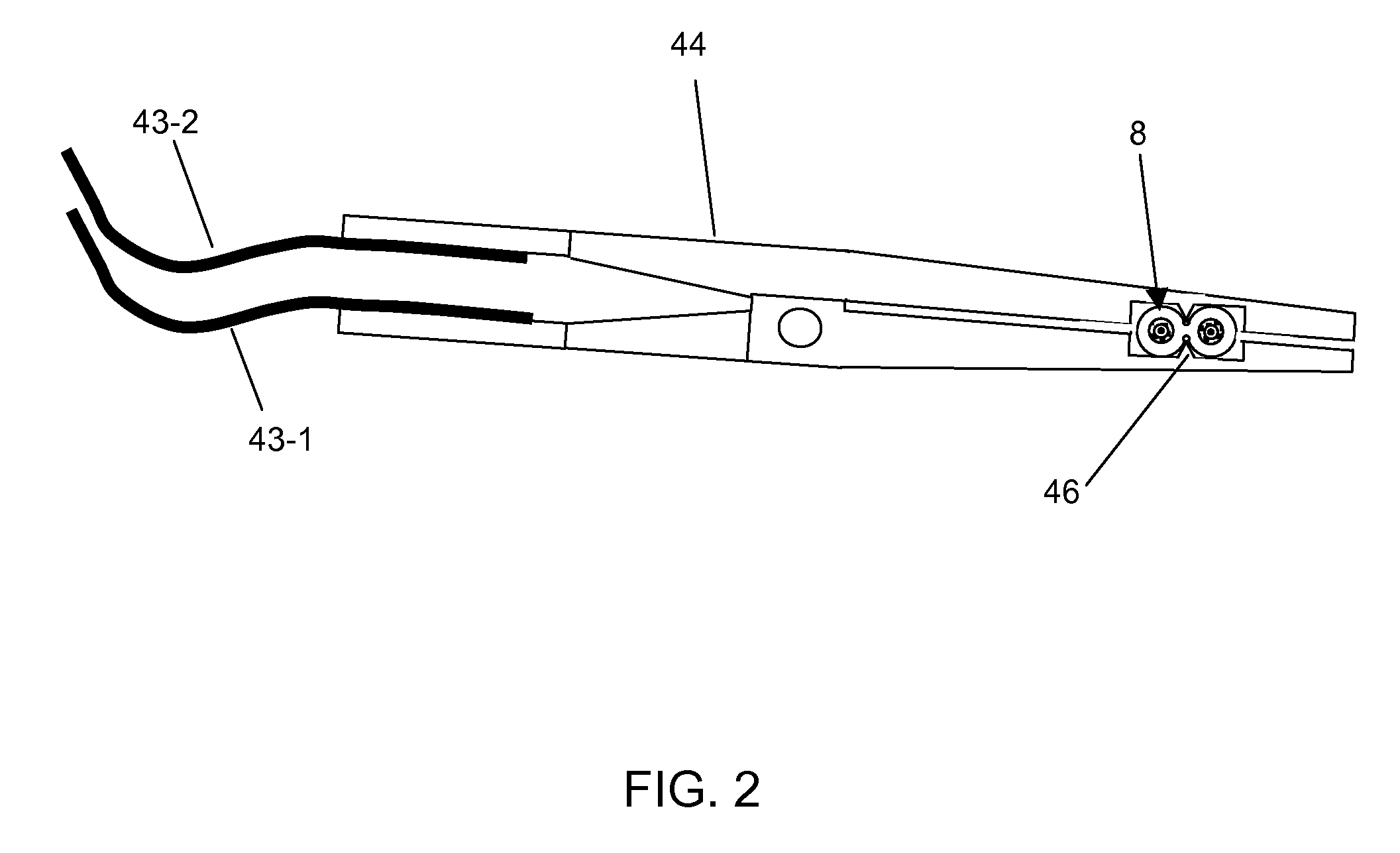Electrically traceable and identifiable fiber optic cables and connectors
a technology of fiber optic cables and connectors, which is applied in the field of optical fiber cables and systems, can solve the problems of ineffective electronic tone tracing techniques for locating fiber optic cables, difficult non-invasive access, and inability to locate conductors embedded in cable jackets, etc., and achieves the effect of convenient contact and quick locating and identifying
- Summary
- Abstract
- Description
- Claims
- Application Information
AI Technical Summary
Benefits of technology
Problems solved by technology
Method used
Image
Examples
example
Cable Fabrication Process
[0056]The fabrication of composite fiber optic cable structures in accordance with this invention may utilize a process of coextrusion, in which the conductive wires, jacket material, aramid fiber and coated optical fiber are extruded together. Alternatively, a continuous strip of conductive foil or ink can be applied to the cable through a hot stamping process similar to that utilized to print identifiers onto the cable jacket. Hot stamping is a process whereby a stamping die is heated and forced against the cable jacket with a conductive material sandwiched in between. The material may be in the form of ink or foil, which is left behind in the regions where the heated die contacts the cable. The stamping temperature is typically between 100 and 205 degrees C. and the stamping pressure is typically between 0-6 bar.
[0057]In an alternate example, thermoplastic or “hot-melt” adhesive may be applied to the cable jacket by coating, spraying or laminating with a ...
PUM
 Login to View More
Login to View More Abstract
Description
Claims
Application Information
 Login to View More
Login to View More - R&D
- Intellectual Property
- Life Sciences
- Materials
- Tech Scout
- Unparalleled Data Quality
- Higher Quality Content
- 60% Fewer Hallucinations
Browse by: Latest US Patents, China's latest patents, Technical Efficacy Thesaurus, Application Domain, Technology Topic, Popular Technical Reports.
© 2025 PatSnap. All rights reserved.Legal|Privacy policy|Modern Slavery Act Transparency Statement|Sitemap|About US| Contact US: help@patsnap.com



